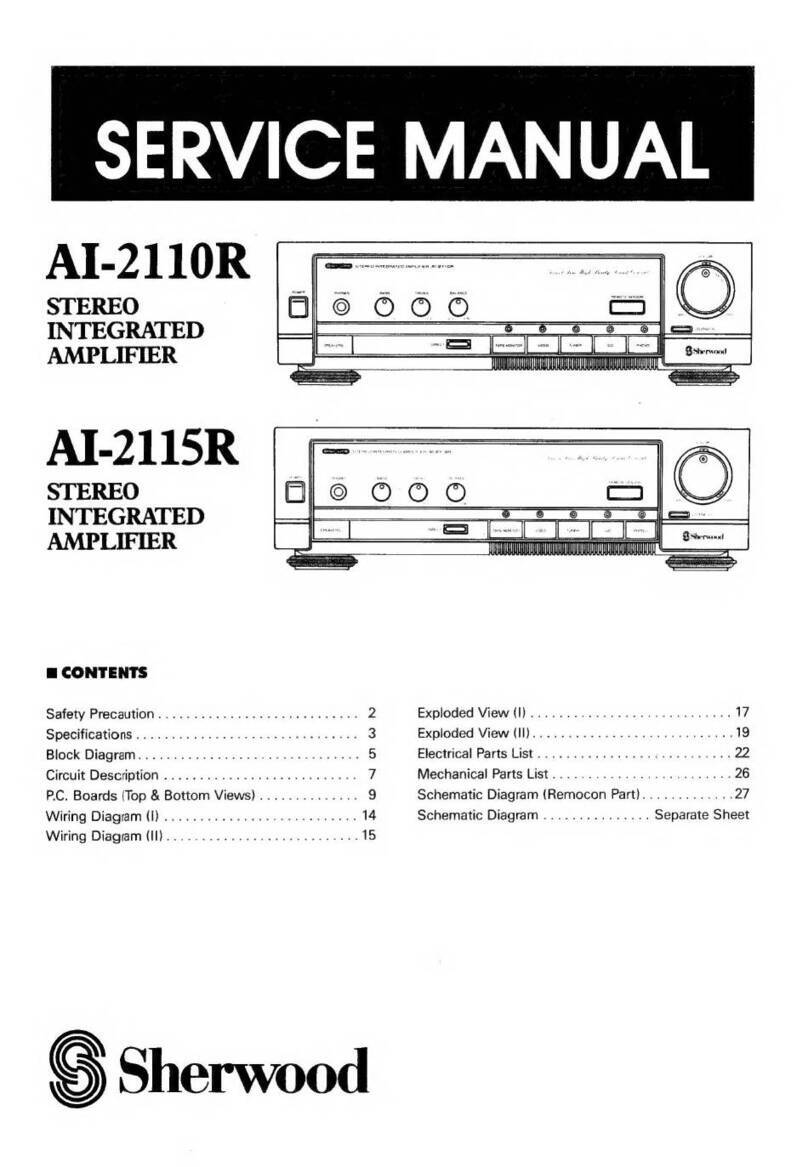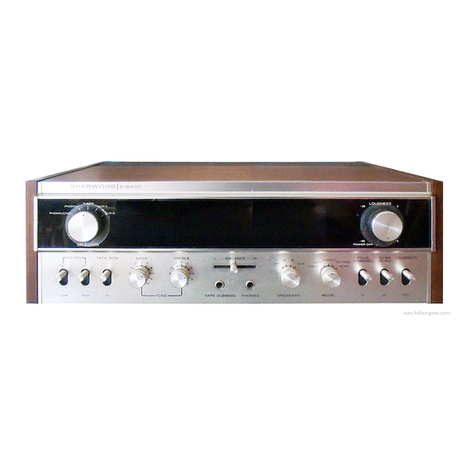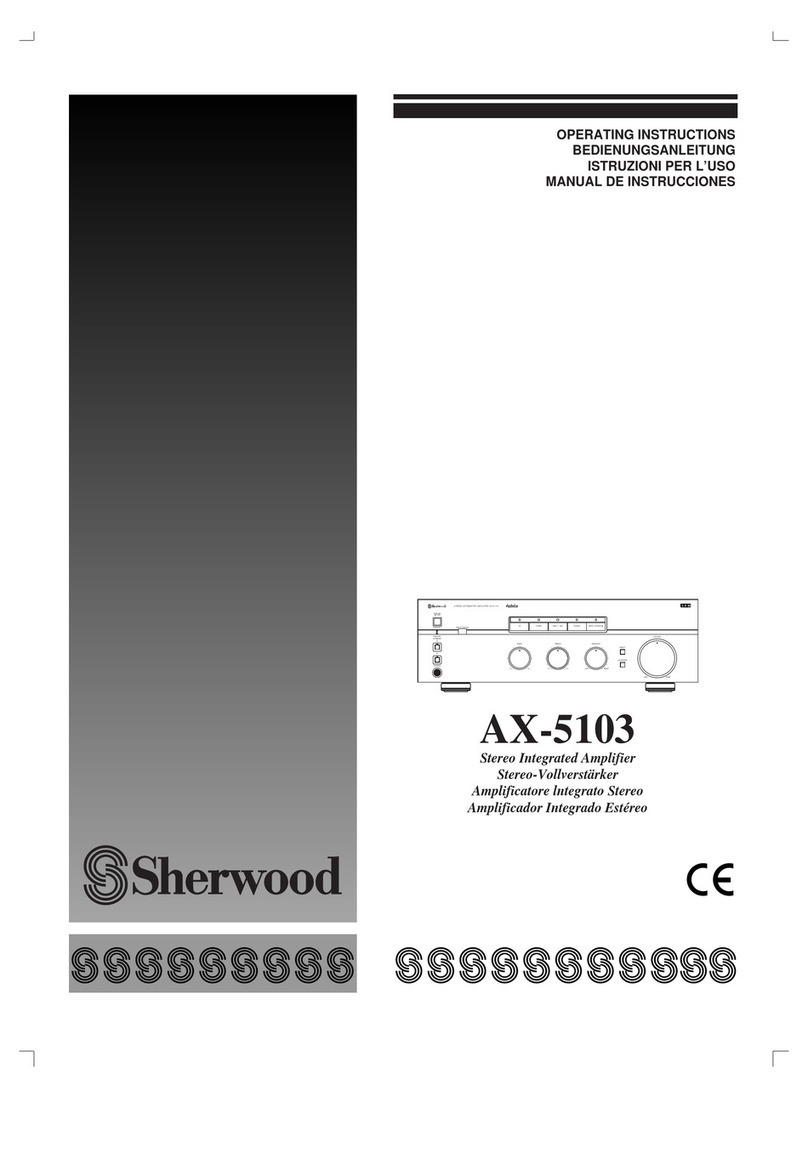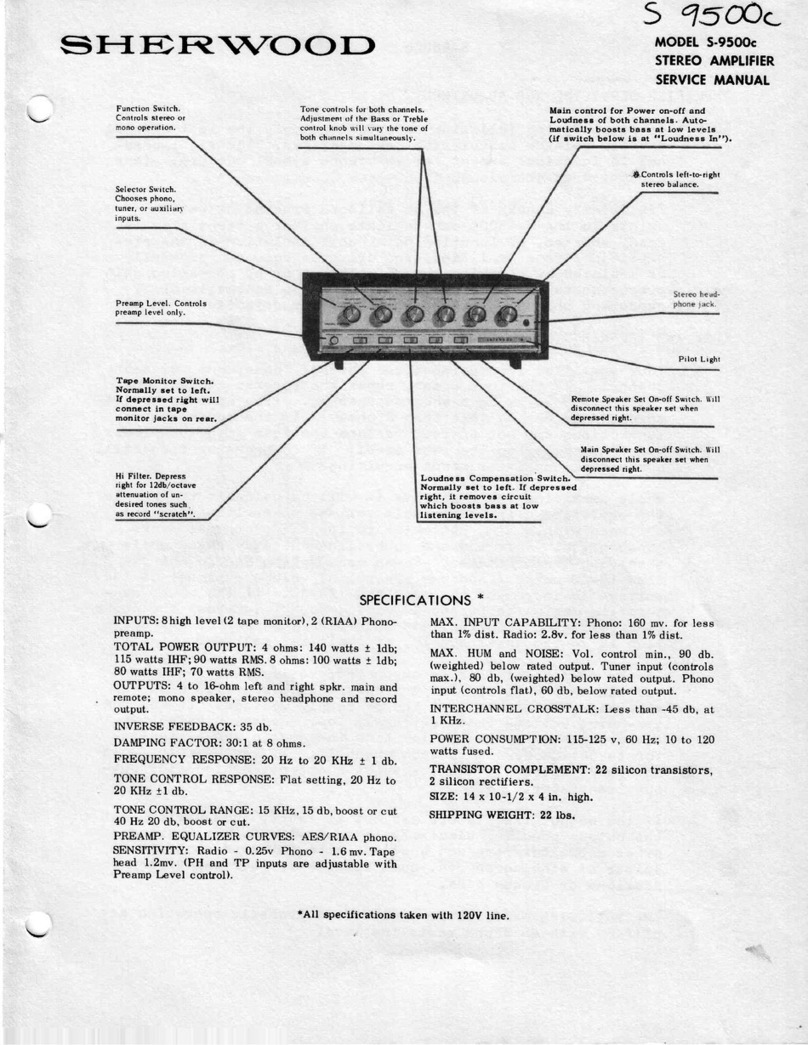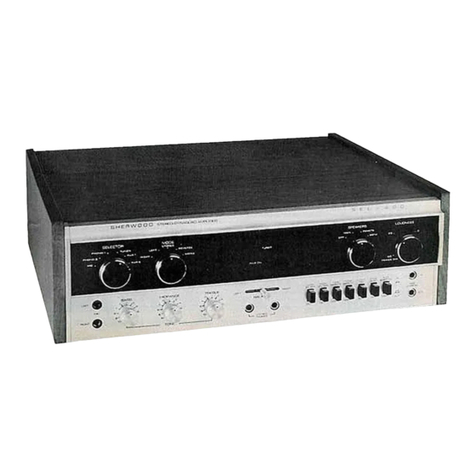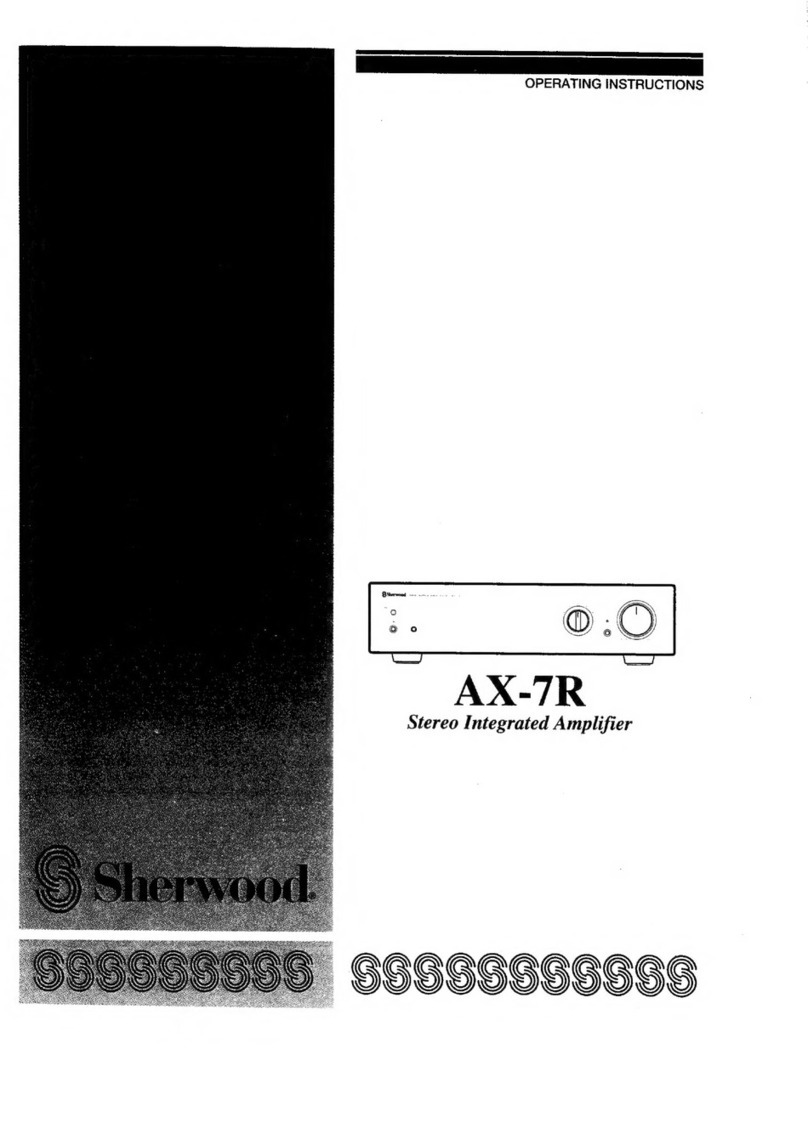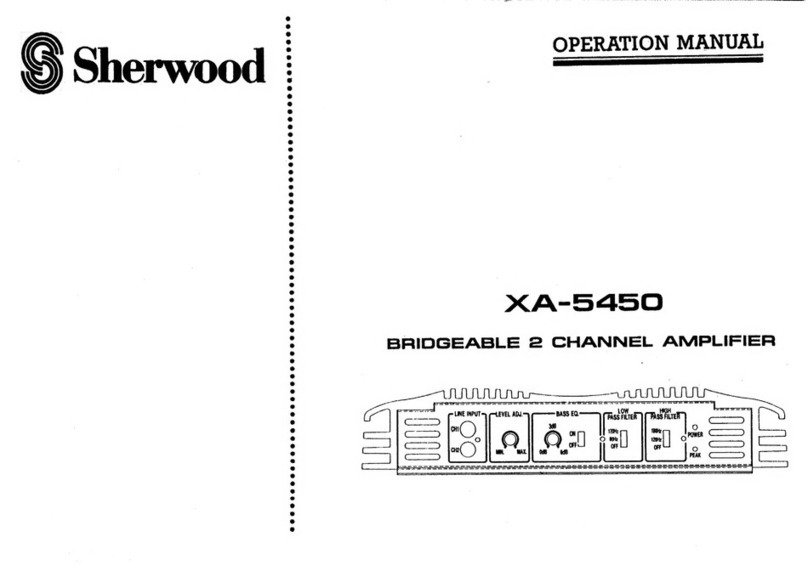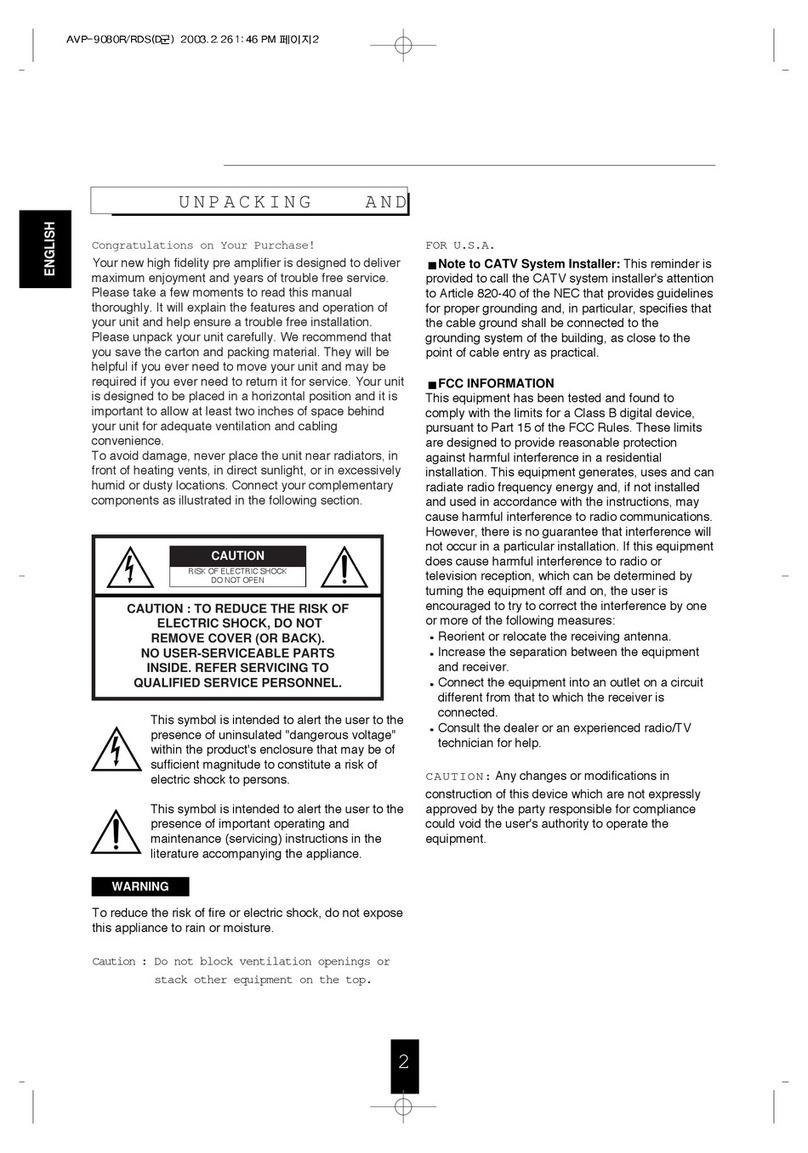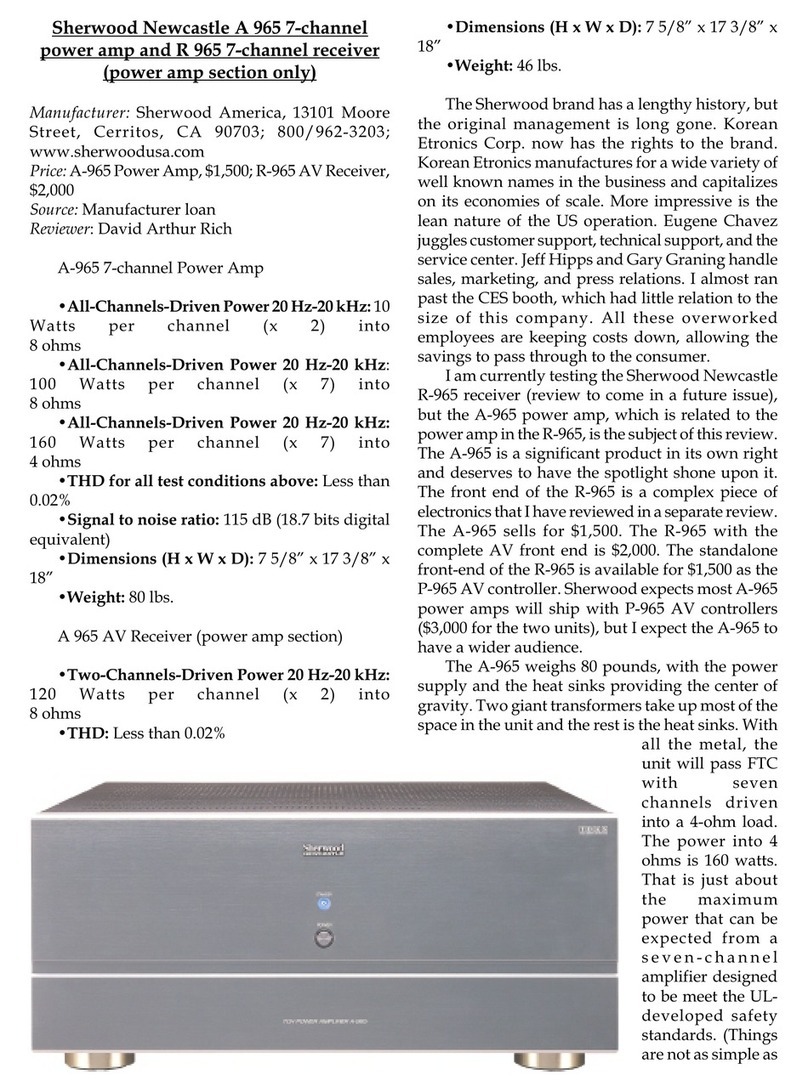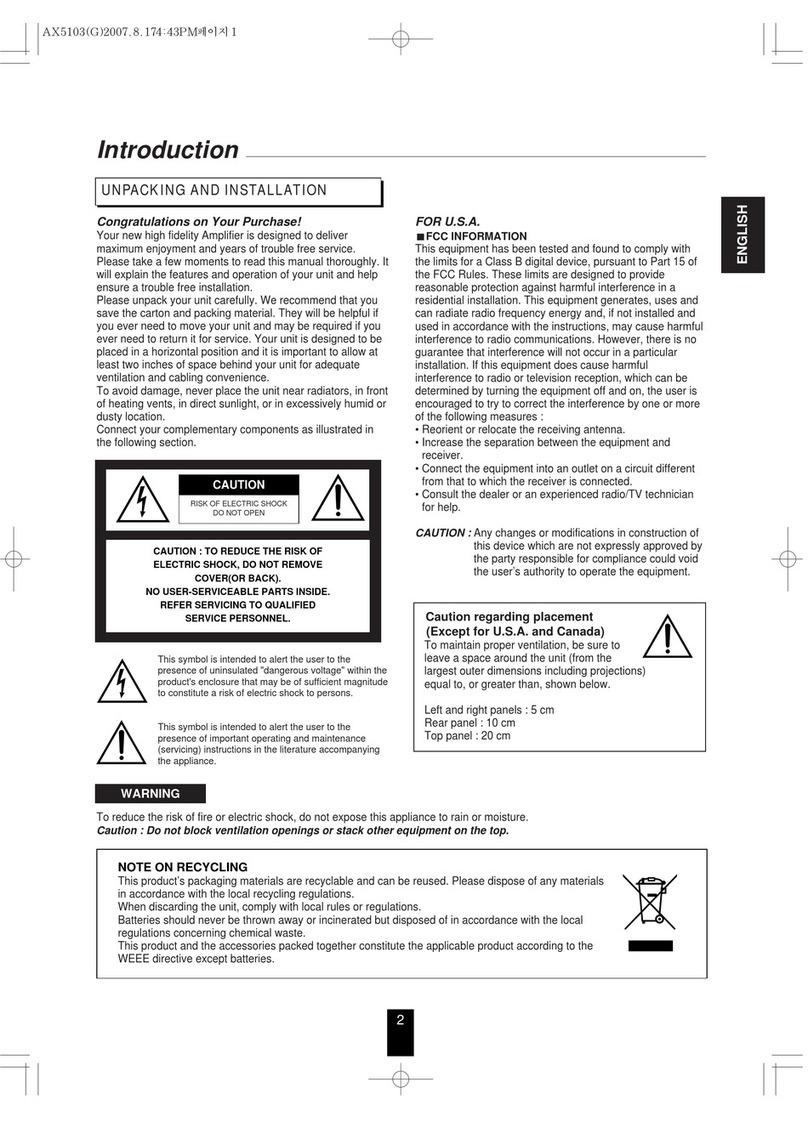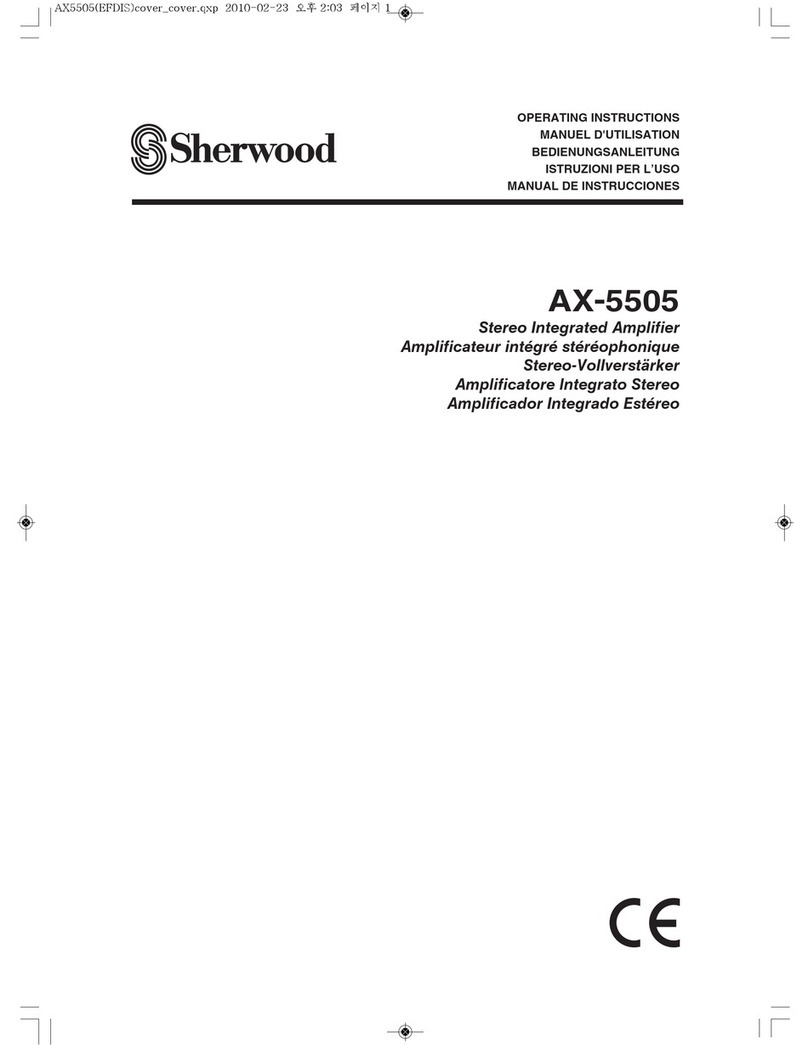s-9500
sERVlclNG
VOTTAGE
CHECKS
Preliminary checks of tlte D.C. voltages
present at various points in the 5-9500 can
i"ove usefulinlocatingdefectivecomponenttil
They are inconclusive,
however,
in determin-
ing if transistors are operating properly in
all aspects. They can only indicate whether
the transistor is open,
shortedor fgnctioning,
not how well the transistor is functioning.
IN GENERAL:
Correct voltages indicate a functioning
transistor.
The same voltage at the colleetor 4nd
emitter indicates ashortedtransistor.
FUll supply voltage on the collector and
no voltage onthe emitter indicates an
open
transistor.
OUTPUT
TRANSISTOR
BIAS
Of all the specifications which require eheck-
ing to ascertain eorrect performance of the
S-9500,proper outputtransistor operationis
the most important and critieal. Adjustment
of the output transistor bias is necessary if
output transistors are replaced*, or the
amplifier exhibits one or more of thefollow-
ing symptoms:
1. Overheating of the output transistors
under normal operating conditions.
2. Excessive low level Intermodulation
Distortion more than 0.t% at 1.5
volts across I ohms(0.28
wattoutput).
Adjustment of output transistor bias should
then proceed as follows:
FI
G.
I
* It is extremely important that the mica insulating rih"", usedto separatethe output
transistors from their heat-s
beunbrokenandinstatled properly, with silicon grease liberally appliedto all surfaces in contactwith eachother. A
make certain the emitter and bas-e
pins of the output transistors do not contact anypart of the heat-sinks. (See
p
list, Page6A.
)
NOTE: The fuses located on each channels driver board protect the output transistors against very heavy transients or
short circuits. They should be replaced with identlcal fuses when blown
1.
2.
Turn amplifier off.
Set balance
pots (R52
and
R152)
to mech-
anical center and bias pots (R60 and
Rl 60)ftrlly counter-
cloclwise.
Conneet D.C. voltmeter of at least SVo
known accuracy to the hot side of the
appropriate channel'soutputcapacitor.
Turn amp. on and adjust balance pot
(R52 or R152) so that exaetly t/2 B+
voltage is onthe output capacitor.
Turn volume eontrol to maximum. Con-
nect anIntermodulation Distortion analyz-
er to the amplifier alx. input and adjust
the analyzer output for anamplifier output
of 1.5Vacross 8 ohms. (Because
the out-
put stageshavebeenset into healy class
3'B." oleration by the "pre-setting" in
Step2, L elass ' eB" notchinthedistortion
waveform will be obvious.) Adjust the
bias pot (R60or R160)for rninimum dis-
tortion as shownin Fig. 1.
IMPORTANT: Misadjustment Of the
bias pot cancauseheavyclass 3'A,,
oper-
ation of the output transistors, causing
them to overheat.
The following performance indicates 4
properly operating output stage:
Typically O.LVo
I.M. distortion at1.5V
across 8 0hms.
Tlpically LVo
I.M. distortion at 10V
across 8 0hms.
20 watts of power per channel,before
clipping; both channels operating.
3.
4.
5.
6.
PULL
OUT
FOR
CHASSIS
LAYOUT 9A
